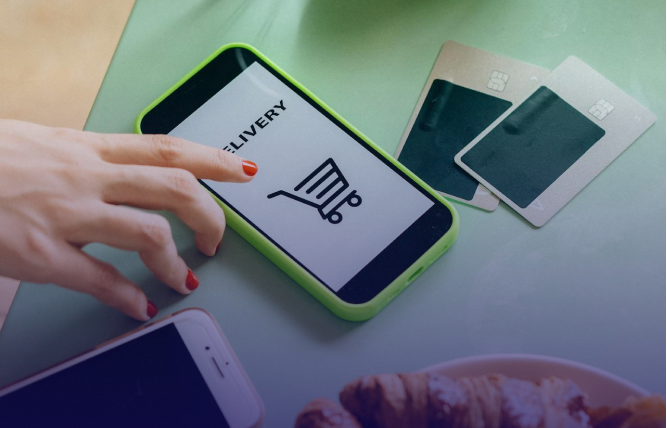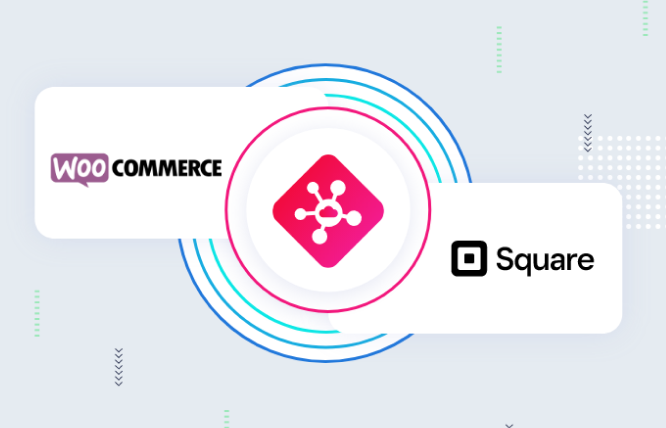Introduction
This blog will examine the upcoming ecommerce trends that are expected to prosper in 2025. We explore how AR product visualisation, chatbots, and other innovations can transform your online shop and provide a plan to improve your business for success in the ever-evolving digital landscape.
The online shopping experience is always changing, influenced by new e-commerce trends and technologies and the way consumers shop. It is essential for businesses of every size, including well-known companies and new startups, to keep up with these trends.
This blog is all about the most popular e-commerce trends in 2025, providing insight into their potential effects on your business and offering suggestions for adjustment
The Rise of Online Mobile-First Shopping
Our dependence on mobile devices is evident in our shopping habits. In the year 2025, it is anticipated that mobile commerce will reach new heights. Consumers today use smartphones and tablets to browse products and make purchases. New e-commerce trend requires prioritising mobile for e-commerce. If you haven’t done so yet, think about teaming up with Shopify store setup experts to make sure your website is optimised for mobile devices.
Here’s what you can do:
- Prioritise mobile responsiveness: Your website must adapt to different screen sizes for a seamless shopping experience on any device.
- Offer a user-friendly mobile app: Create an app that is easy for users to navigate, where they can view products, place them in their cart, and complete the checkout process swiftly.
- Optimise product pages for mobile: Make sure that product descriptions, images, and calls to action are easily readable and accessible on smaller screens.
By adopting a mobile-first approach to shopping, you can simplify the process for customers to find your products and make purchases while on the move.
Why Staying Ahead of Ecommerce Trends Matters
Competition is intense in the e-commerce industry. Therefore, keeping up to date with the most recent developments can provide you with a major advantage over your rivals. Here’s how:
- Attract new customers: Incorporating popular functionalities, such as AI-driven personalisation or incorporating social commerce, can appeal to potential customers seeking a more interactive shopping experience.
- Improve customer satisfaction: Ecommerce trends often focus on enhancing the overall customer’s shopping experience: you may provide ease which will lead to increased loyalty and repeat business.
- Future-proof your business: Follow modern ecommerce packaging trends to ensure your business is well-positioned for future success.
Remember, even small businesses can benefit from adopting these b2b ecommerce trends. Open-source ecommerce solutions are readily available, offering affordable ways to implement the latest features and functionalities.
Now, let’s delve into some of the specific ecommerce trends 2025 that are shaping the future of online shopping.
Top Trends Shaping the Future of Online Shopping
Personalised Shopping Experiences with AI
Artificial intelligence (AI) is modifying the way we make purchases on the internet. AI has the ability to examine customer data in order to provide customised product suggestions, focused promotions, and anticipate purchasing patterns. This results in a shopping experience that is both more interesting and effective, ultimately resulting in increased conversion rates.
Easy Shopping with Hybrid Commerce
Nowadays, it’s hard to tell the difference between buying something online and at a physical store. Hybrid commerce strategies offer an omnichannel shopping experience, enabling customers to shop seamlessly through various channels. This might include providing buy-online-pick-up-in-store options (BOPIS) or linking social media platforms to your online store for convenient product finding and buying.
Immersive Shopping with AR/VR
Virtual reality (VR) and Augmented reality (AR) are game makers of modern shopping experiences. AR uses digital elements to overlay the real world, enabling customers to virtually test out clothes, furniture, or makeup prior to purchasing. Virtual reality enables customers to have a fully immersive shopping experience where they can virtually navigate through a store or examine a product in 3D. These technologies have the potential to offer a shopping experience that is more authentic and captivating, ultimately resulting in higher customer trust and increased rates of converting sales.
Social Commerce Takes Center Stage
Social media platforms now serve a purpose beyond connecting with friends and family. They are turning into strong centres for online shopping. Social media channels are becomming the cornerstone for online shopping, enabling influencers and brands to sell products directly on the app. This trend offers businesses a great chance to expand their reach and use social influence to boost sales.
Convenience Is All They Are Looking for
In our modern society, anything that provides convenience reigns supreme. Consumers anticipate a smooth shopping journey, starting from finding products to completing the checkout process. This includes providing functionalities such as one-click ordering, guest checkout choices, and quick and dependable delivery. Moreover, there is an increase in subscription boxes in B2C ecommerce trends, which provide custom product choices delivered straight to customers’ homes. This high level of convenience is tailored for hectic schedules and encourages customer loyalty.
Streamlined B2B Transactions
The B2B e-commerce trends are constantly changing. Businesses are more and more looking for online platforms that simplify the ordering procedure, thus making it more convenient to locate and buy products from suppliers. These platforms frequently provide functions such as self-service portals, automated reordering, and bulk discounts, all aimed at helping businesses save time and money.
More B2C Shopping Channels
B2C ecommerce trends are all about extending to different platforms. Voice commerce, enabled by devices such as Amazon Echo and Google Home, enables shoppers to make purchases through verbal instructions. Furthermore, there is a growing trend in e-commerce fashion known as “see now, buy now” models, allowing customers to buy clothing directly from fashion shows or live streams. There has been a notable increase in direct-to-door delivery as a result of the growing popularity of the D2C ecommerce trends “Shop Online”; the focus is on making it easy and convenient to reach customers and provide more interactive shopping experiences.
Immersive Shopping with Augmented Reality (AR) Product Visualisation
AR puts digital items on top of the physical world, enabling users to virtually test out clothing, furniture, or cosmetics before making a purchase. Picture a scenario where a consumer can use their phone to virtually place a new sofa in their living space in order to determine if it complements their existing decor. This can offer a more authentic and immersive shopping experience, resulting in enhanced customer trust and increased conversion rates.
The Rise of Chatbots and Virtual Assistants
Chatbots and virtual assistants are more advance than ever, providing around-the-clock customer service and responding to inquiries about products instantly. This enables businesses to offer a personalised shopping experience and allocates human customer service reps to handle more intricate queries.
Frictionless Payments with One-Click Payment Methods
Customers anticipate a quick and simple checkout experience. Digital wallets offer one-click payment options, enabling customers to make purchases quickly without having to enter detailed billing details. This can greatly decrease the number of abandoned carts and increase sales.
The “Try Before You Pay” Movement
Consumers are becoming more wary of buying things online, particularly when it comes to clothing and beauty items. The trend of “Try Before You Pay” enables customers to order items, test them out at home, and only pay for the ones they decide to keep. This can help alleviate customer worries regarding size and standard, resulting in boosted conversion rates and enhanced customer happiness.
How to Optimise Your Ecommerce Store for Success
After grasping the most popular e-commerce trends, let’s discover how to utilise them and enhance your store visibility and accessibility to achieve success.
Identifying the Right Trends for Your Business
Different Ecommerce trends have varying levels of importance. Identifying trends that match your target audience, business objectives, and available resources is crucial. If you specialise in luxury jewellery sales, utilising AR product visualisation can be beneficial, whereas a clothing store may find a “Try Before You Pay” model to be more appropriate.
Implementing Strategies for Each Trend
Once you’ve identified relevant trends, develop a plan for implementation. This might involve:
- Upgrading your website or app: Ensure it’s mobile-friendly and consider integrating features like chatbots or one-click payment methods.
- Partnering with specialists: Consider collaborating with companies specialising in AR/VR development or DevOps implementation for complex functionalities.
- Content creation: Create engaging content that showcases the benefits of these trends, like blog posts or videos explaining how AR product visualisation works.
The Future is Bright: A Look Ahead
The future of E-commerce has always been bright and is constantly evolving with modern ecommerce trends. Here’s how to stay ahead of the curve:
Utilise Modern Tools and Data Analytics
Utilise data analysis tools to gain insight into customer actions and preferences. This will assist you in recognising, developing trends, and adjusting your strategy accordingly. Moreover, consider utilising contemporary technologies such as DevOps to expedite development processes and speed up the integration of new functionalities.
Staying Informed and Adapting to Changes
Stay up-to-date on industry news and attend relevant conferences or webinars. This will give you access to the most recent trends and enable you to adjust your tactics accordingly. Keep in mind that being able to adjust and welcome change is essential for sustained success in today’s online commerce.
Wrap Up
This blog post has unpacked the latest ecommerce trends expected to dominate 2025, from mind-blowing AR visualisations to the convenience of one-click payments. But here’s the secret sauce: It’s not about blindly chasing every trend.
The key lies in identifying the trends that resonate most with your target audience and business goals. Once you’ve narrowed them down, develop a strategic plan for implementation. This might involve revamping your website or app, collaborating with specialists, or creating content that educates customers about these exciting new features.
The outlook for e-commerce is optimistic. By utilising advanced techniques such as data analytics and DevOps, you can remain ahead of the game and adjust your tactics as required. Keep in mind, being able to adapt to change is the key to achieving sustained success in the constantly evolving digital market. Prepare yourself and fasten your seatbelt to elevate your e-commerce business to the next stage!
Frequently Asked Questions
It is not always the case! The important thing is to recognise patterns that are compatible with your desired audience, company objectives, and available assets. For example, a furniture store could benefit from AR product visualisation, while a clothing brand might find a “Try Before You Pay” model more fitting.
There are numerous ecommerce trends, such as ensuring your website is mobile-friendly or providing one-click payment options, which require only a small amount of investment. Open-source ecommerce platforms can provide cost-effective options for integrating certain features as well. For advanced features such as AR/VR, it is advisable to team up with experts who can provide affordable solutions.
No need to be concerned! There are numerous available resources to assist. Collaborating with professionals such as Shopify store setup experts having experience in e-commerce app development.
Staying well-informed is the key to the digital world! Subscribe to trade magazines, participate in appropriate conferences or webinars, and utilise data analytics tools to grasp customer behaviour and upcoming trends. Ensuring your e-commerce store thrives in the constantly changing online marketplace involves staying flexible and welcoming change.
Have questions or feedback?
Get in touch with us and we‘l get back to you and help as soon as we can!



